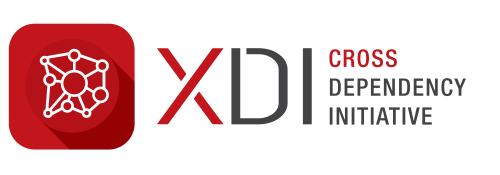A new era in physical climate risk reporting?
By Georgina Woods, Head of Impact, The Climate Risk Group.
Wednesday, 29 June 2023
The much anticipated release last week of the final climate-related disclosure standard from the International Sustainability Standards Board (ISSB) marks the beginning of a new chapter in corporate disclosure of climate change risk.

It is hoped that adoption of consistent global standards will lead to more comprehensive and more comparable disclosures, particularly in the area of physical risk.
The International Financial Reporting Standards (IFRS) Foundation established the ISSB in 2021 and began work on developing international standards for climate change and sustainability reporting. The IFRS are a set of accounting rules for the financial statements of public companies intended to make them consistent, transparent, and easily comparable around the world. Relevant authorities in 161 countries have made public commitments to IFRS Accounting Standards as the single set of global accounting standards (you can check the status of your country’s commitment to IFRS reporting standards here.) As a result, many jurisdictions are expected to adopt the ISSB standards. Others, such as the UK and EU, have already adopted climate risk reporting standards, and sustainability taxonomies, and these instruments are forthcoming globally.
The ISSB’s climate-related standard builds on the TCFD guidelines of 2017 and provides more detailed guidance and examples concerning physical risk disclosure than the TCFD.
At its core, the ISSB requires companies to disclose significant climate risk as a whole:
An entity shall disclose information that enables users of general purpose financial reporting to understand the significant climate-related risks and opportunities that could reasonably be expected to affect the entity’s business model, strategy and cash flows, its access to finance and its cost of capital, over the short, medium or long term.
Objectively, this should be sufficient to ensure consideration and disclosure of physical risk, given its universality, severity and duration. However, a review of the review of climate-related risk reports by a sample of 180 financial institutions for the UNEP-FI’s Physically Fit report found that nearly half (48%) of the disclosure reports did not provide any review of physical risks at all. Those that did, were selective in their approach, reviewing a small sample of hazards in limited sectors.
The ISSB draft however followed TCFD in not specifying that both transition and physical risks needed to be addressed in each element of the disclosure framework. This might reduce its effectiveness in closing the “disclosure gap” between transition risk and physical risk reporting.
Compared to transition risk, physical risk reporting by financial institutions and companies is “still in their infancy” (UNEP-FI 2022). It has had less attention, is less commonly disclosed and disclosures that are made are less consistent, less quantitative and less decision-useful than transition risk disclosure.
A background paper prepared for the ISSB Board in July 2022 meeting identified “an entity’s exposure to and management of physical climate risk,” as an area that may need to be “refined or supplemented in the future” because disclosure of this aspect of climate risk “has generally been less informative to investors than reporting on transition risk.”[1]
As we have observed before, adequate assessment and disclosure of physical risk is necessary for corporate leaders, lenders and investors to avoid being caught unawares by asset impairment, escalating insurance premiums, lost productivity and disrupted supply chains. If physical risk is priced into financial markets before these disruptions worsen, it will have the added benefit of balancing the ledger with transition risk, making the case for rapid decarbonisation and resilience investment.
In any case, climate change is escalating and momentum towards mandatory climate risk reporting is building: the time to come to grips with your physical risk is now.
[1] ISSB July 2022. Staff Paper: Agenda item 1a.
MEDIA ENQUIRIES
Petrana Lorenz, Director of Communications: +61 405 158 636
media@xdi.systems
